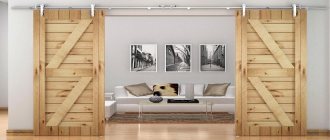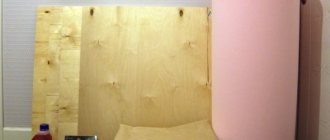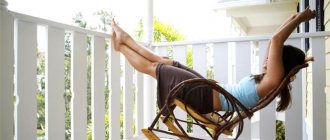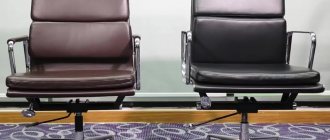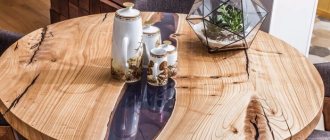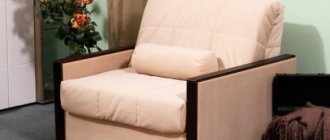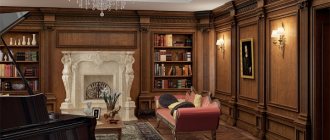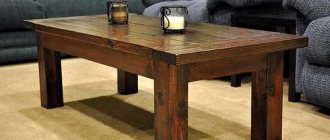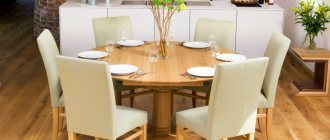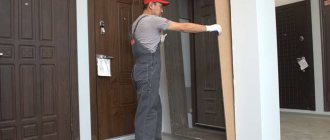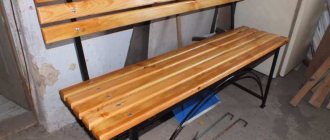Hi all! Today I decided to talk to you about soft wall panels for the bedroom and what they are like, or how to make them yourself.
This is a rather original element for decorating rooms. Objectively, the panels are more suitable for the bedroom and children's room.
In addition to appearance, these products have a number of other significant advantages. These are not only decorative functions, but also practicality and certain benefits for the room and its inhabitants.
I hope I've interested you. Now let's move directly to what you can buy or make yourself. There will also be a small master class. But I also advise you to watch a visual video clip from YouTube. According to the already established tradition, he will be at the end.
Soft panels for the wall: relevance for the interior
An interior solution using wall panels complements the design of the apartment, creates warm comfort and, at the same time, looks luxurious and rich.
In addition to aesthetic pleasure, the panels are a convenient solution for young parents. Children learn about the world and often fall and hit themselves. The soft finishing of the walls will protect little people from bruises and, moreover, has good sound insulation.
Nude shades look harmonious in the bedroom; they are often used to decorate and give the room an atmosphere of tenderness.
In kitchen areas it is convenient to decorate the corners and bar with soft panels.
The panels are in perfect harmony with other finishing materials, which allows you to create exclusive and unique apartment designs.
It is worth noting that they were used in their interiors by nobles, and later by wealthy people, adding luxury and wealth to their homes.
What you need to know
This kind of wall decoration can hardly be called a novelty. It was already popular several years ago. Now there has been an almost triumphant return - the material began to play in a new reading and processing.
The designers appreciated the original look of such a decorative element. They widely use it in decorating the bedroom, much less often in decorating the living room. But beauty is not the only advantage.
Advantages
- Excellent suppression of noise and sounds. The relaxation room has what you need.
- They are easy to work with. You can even do the installation yourself.
- Able to hide wall imperfections. For example, unevenness and roughness, even large ones.
Design: Enjoy Home studio
Instagram @izooom.ru
Instagram @dariaelnikova
Instagram @elenasavinova_design
Instagram @molotkova_design
Features of care
When choosing a material, it is important to take into account the features of its operation. The easiest way to care for products made from eco- and natural leather. They can be wiped with a damp cloth and dust does not accumulate on them. And those made of suede, nubuck or any fabric, on the contrary, attract dust and require appropriate care. At least once a month they are vacuumed and cleaned with special products.
- Walls
8 best materials for wall decoration in the loft style (for the most discerning taste)
Fillers
Another aspect that affects the price of finishing is the filler. Manufacturers offer two options.
- The first is foam rubber, it is more often used for the manufacture of thick slabs.
- The second is padding polyester. It is lighter and thinner, so products with such filling look more elegant. But it is also more expensive.
By the way, the cost of custom-made slabs is another good reason to think about installing them. But, if you are not afraid of these characteristics, we suggest taking a closer look at the use of elements using the example of design projects.
Soft wall panels for interior decoration: design features
The material has a second name because of its design - “3D Panels”. They have a multilayer structure in cross-section:
- 1) The first layer is a PVC backing 5 - 8 centimeters. It has increased strength and adhesive characteristics to various adhesive bases.
- 2) Second layer – or filling. It consists of a modernized analogue of polyurethane foam - hardened polyurethane foam.
- 3) The third layer is decorative. Made from different materials: leather, fabric, textiles.
Two materials are used as filler:
- foam rubber - it is used to make relief panels;
- padding polyester – for creating smooth surfaces.
Panel arrangement
Whatever the decorative panels, their structure is approximately the same. Initially, a rigid base is taken, which can be sheets of fiberboard, MDF, chipboard or something similar. As a rule, foam rubber with a thickness of 10 mm to 100 mm is glued to this sheet. After which all this is covered with leather, leatherette or fabric.
Now there are several types of such coating, some models are truly exclusive and it is not possible to make them at home with your own hands. So in the photo below you see soft 3D wall panels. They certainly look impressive, but trying to make them at home is useless; special machines are needed here.
Making 3D wall panels with your own hands is impossible.
Making soft panels for walls with your own hands at home has certain features; from experience I can say that there are 2 relatively simple models that a home craftsman can handle - these are smooth soft panels and panels made using the carriage screed method, which will be discussed further below. there will be a speech.
Carriage screed is considered one of the most popular and impressive types of wall panels.
Types of soft decorative coverings
The material used for upholstery is:
- 1) Textiles are a popular upholstery. It has a wide range of colors and various designs and patterns. For finishing it uses viscose, linen, silk, velor, suede, etc. They have a low price.
- 2) Leather and faux leather are a popular choice of finishes. They are durable and easy to use. Wide selection of colors, textures and rhinestone decoration options. They are most successfully combined with a calm tone of wallpaper or paint.
Fabric upholstery is not as durable as leather or leatherette upholstery.
Soft panels instead of a standard headboard in the bedroom
The main element that distinguishes designs using upholstered panels is, first of all, the method of their installation. An interesting and in most cases the cheapest solution is to install panels directly in the place where the bed is located . Then the soft wall panels look almost like a headboard, but can be completely different from the bed itself.
When choosing this solution , you can also choose two mounting options , depending on the desired effect. The soft panels can be secured from the ground to your chosen height. In this regard, in addition to your own preferences, you should also take into account the height of your bed.
The second option, which is chosen much more often, especially in the case of limited space, is to install wall panels from where the surface of the bed ends. Thanks to this, it can be pressed against the wall itself . In small bedrooms, even 3-4 centimeters are often important so that you can comfortably open or close the door.
Soft walls in the interior: advantages and disadvantages
The finishing material has a lot of pleasant advantages:
- 1) Versatility.
- 2) Combine with other materials - paints, wallpaper.
- 3) They make the interior luxurious and add gloss.
- 4) Faux leather panels do not require special care.
- 5) Easy to install and assemble.
- 6) They are soundproofed.
- 7) Conceal surface unevenness, as well as wires and communications.
 Durability.
Durability.- 9) Safe and environmentally friendly material is used for creation.
- 10) You can form relief patterns without additional constriction.
- 11) Wear resistance.
- 12) Resistance to mechanical stress.
- 13) They are not prone to fire and do not emit toxic substances when heated.
The advantages of finishing include hypoallergenicity. To create it, we use high-quality and safe materials that do not cause allergies.
The panels come in different sizes, which is convenient when using and decorating an apartment. You can choose exactly the one you need.
There are significantly fewer disadvantages, these include:
- The price of some types, especially those made of genuine leather.
- Material with suede and textile trim requires careful care.
The finishing material looks harmonious in spacious rooms. For owners of small apartments or houses, it is more advisable to partially use such material for decoration in the interior.
Thanks to the panels, it is easy to focus attention on the necessary things in the interior. You can highlight a fireplace, a bar, or make a frame above the TV. Panels above the head of beds and in children's rooms are widespread.
Advantages and disadvantages
Soft wall panels fit well into any type of interior; the main thing is to choose the appropriate solution. They allow you to create an elegant interior and add a touch of aristocratic luxury to it.
It is important that the panels are universal - suitable for residential premises, used for upholstery of cafes, cinemas and other establishments
Among the advantages it is worth noting the following:
- sound and heat insulation effect;
- decorative functions - guests and visitors will definitely remember this interior detail;
- the ability to zone a room without resorting to the use of bulky partitions and screens;
- versatility and ability to harmoniously combine with different types of finishing materials;
- the ability to hide minor imperfections in the wall covering, primarily differences in height;
- ease of installation;
- resistance to deformation - after pressing, the material immediately takes on its former shape;
- environmental friendliness and safety of the material - an excellent option for decorating children's rooms;
- ease of use – leather panels are easy to care for.
It is fair to say that the cost of the products is quite high.
How to make soft wall panels with your own hands: a master class on making
You can create wall panels with your own hands.
Composition and installation do not require special skills and equipment. Initially, you need to decide what kind of panel you will create and the upholstery material. When choosing leather for upholstery, you need to take into account that the material is demanding and difficult to work with without skills.
To work you will need:
- 1) Base – fiberboard sheet or plywood.
- 2) Construction stapler, glue, you can use liquid nails. Scissors.
- 3) Material for finishing: textiles, leatherette, leather. The piece of material must be larger than the base.
- 4) Filling: padding polyester or foam rubber.
- 5) Materials for decoration: buttons, rhinestones, etc.
First layer
The base is a sheet of plywood or fiberboard. Holes are made in it at the same distance, in the order in which the finishing material will be attached. In most cases, a checkerboard order is used.
Second layer
Next, the filler is taken, laid on the base in strips and secured with a stapler, also folded onto the inside and secured there. If you use padding polyester, it is best to do it in two layers. On average, the layer is from 5 to 8 centimeters.
Third layer
The upholstery material is secured to the filler on all sides with a stapler. The holding buttons are attached using nylon thread. It has increased strength and is not subject to rotting or stretching. The thread is attached to the button and passed through the covering, filling and hole in the base. It is secured with a stapler on the reverse side. It is best to place the thread in different directions for strength.
Method No. 2. Carriage screed and important subtleties of its arrangement
I won’t lie to you, compared to the previous method, the instructions here are an order of magnitude more complicated, but if you really want to master it, you’d like to.
Sequence of arrangement
| Illustrations | Recommendations |
| Making a stencil. The stencil is made from ordinary Whatman paper; only the entry points of the puffs are marked here, in other words, the places where the buttons will be.
When the stencil is ready, we transfer the tightening points to the base; here an MDF sheet about 10 mm thick is used as a base. | |
| Drilling the base. The optimal cross-section of the holes is 8 – 10 mm.
| |
| Homemade joker. In general, a joker is a special device designed for assembling furniture and it is sold in departments with furniture fittings. We will use a joker to make a kind of drill for making holes in the substrate. To do this, an adapter for a screwdriver is attached to one side, and the reverse side of the tube is sharpened around the circumference. | |
| Lubricate the base with glue. Ideally, it is advisable to apply the glue with a spray gun; the cross-section of the nozzle should be 1.5 - 1.7 mm. If you don’t have a spray gun, then take glue in a tube and lubricate the shield, especially around the holes. As a last resort, take a foam roller and apply glue with a solid ball; this is an acceptable option, but the glue consumption is greater. By the way, on the left side of the shield there is a sloping edge made of foam rubber, these are sold in furniture fittings stores. They are convenient for arranging a semicircular edge. | |
| Hole marking. The relief depends on the thickness of the substrate, but the thicker it is, the more difficult it is to drill it accurately. In order not to miss, it is very convenient to use Japanese wooden sticks. Simply pierce the foam rubber with them through the holes in the base. | |
| We drill the foam rubber . Now we take the homemade joker described above and drill out the foam rubber, with the sticks acting as the central center line. | |
| Marking the canvas. Next, we take the eco-leather and, attaching our paper stencil to it, mark the tightening points.
| |
| Firmware . Now we sew the button installation points with nylon threads, tighten them and fix the threads with a stapler on the back side on the shield. (We will insert buttons later). | |
| Forming bends. A real carriage tie is formed by folds. These folds are simply folded with your fingers. If you are offered a tie made from squares, you should know that they are selling you a low-quality product, because the seams will last a couple of years at most, but then they will begin to come apart. | |
| Bringing the folds to perfection . In order to bring the fold to perfection, take a blunt wooden stick and straighten it. The bending depth is about 10 mm. | |
| Landscaping of the region. The entire pattern is formed in stages, that is, 2 - 3 rows of puffs. When you reach the edge, wrap the leather around it and secure it with a stapler on the back side. Folds also form and go under the panel. | |
| It's button time . The main load is carried by the puffs; the buttons perform more of a decorative function, so pulling and securing the threads on the back side will not be difficult. | |
| Corner . Particular attention should be paid to the formation of corners. The hardest thing is to smooth out the folds, but the fastening itself is standard, using a furniture stapler. | |
| Classic carriage tie. |
Important nuances
| Illustrations | Recommendations |
| Cut out the foam . Thick foam rubber is cut with a long and sharp knife. The main thing here is that the knife cuts the foam rubber into one wire, because if you start to “saw” the sheet, you will end up with a “herringbone” edge, and it will appear on the exterior finish. | |
| How to make buttons with your own hands. Of course, you can buy buttons, but compared to homemade ones, they will cost 2 times more. Plus, homemade buttons do not need to be selected by color. First you need to buy blanks. Don’t skimp here, take blanks with a metal eye. Next, cut out “nickels” from the facing fabric to cover the buttons. The diameter of the “nickels” should be 2 times the diameter of the workpiece. | |
| Firmware . Now you need to take a needle and thread and sew a “penny” around the perimeter. | |
| We tighten the base . After stitching around the perimeter you will have a small basket. Insert the workpiece into this basket, tighten the thread and tie it. You should have a good button. | |
| Glue the foam sheets together. Stage 1 . To glue 2 thick sheets of foam rubber, a layer of glue is applied to the edge of the sheet, but not completely. Leave 5 mm to the edge clean. | |
| Stage 2 . Next we glue the sheets together. | |
| Stage 3 . Now we glue interlining to one side of the joint (a density of 40 denier is sufficient). | |
| Stage 4 . Next, lubricate the adjacent sheet with glue and, with a slight stretch, glue a strip of non-woven fabric to it. | |
| We arrange a rounded side. Stage 1 . To arrange a round side, you first need to cut a sheet of foam rubber slightly wider than the base. So if your foam rubber is 50 mm, then the overlap should be left at 40 mm. | |
| Stage 2. Now you smear the base with glue and, tucking the sheet, glue the end of the foam rubber to the base. Only the end does not need to be glued completely, the edge of the foam rubber, approximately 10 mm, should hang over the edge of the base, this overlap will subsequently protect the eco-leather when screwed on. | |
| Stage 3. It should look something like in the photo. If you don’t want to bother with the bend, then buy ready-made foam parts and glue them. Below in the video in this article you will find a number of very valuable tips on arranging a carriage screed with your own hands. |
By the way, if you are thinking about creating a business for the production of soft panels, then you can download a starting checklist with estimated prices and a description of everything necessary to create such a business “HERE” .
Soft upholstery for walls: how to attach
The finished panel is attached to the wall in several ways: using glue, a frame and fastening elements.
Glue
The glue method is the most common. Instructions:
- For better and more durable fastening, the wall must be plastered and primed.
- Make notes in the places where the panel will be.
- Apply glue to the panel, not to the wall. Zigzag lines.
- Glue the material from top to bottom and place it tightly to each other.
If you make the panel yourself, you can use glue as a filler material.
Frame
To form a soft surface, it is necessary to build a frame of slats on the surface.
The space inside is filled with filler and secured at the edges to the slats, and in the middle to the wall. The edge of the upholstery material is folded several times and attached to the top rail using furniture nails and a construction stapler. Next, you need to stretch it evenly and attach it to the sides and bottom. To avoid wrinkles, carefully stretch the fabric.
For a large room, it is recommended to divide the space and make separate frames, stretching each upholstery material one by one. For convenience, you can use ready-made plastic profiles to form the frame
Fastening elements
The optimal method of fastening is using liquid nails or dowels. When attaching the panels to the wall, you need to press them tightly against each other, do not leave large gaps, otherwise dirt and dust will accumulate in them.
Framed wall cladding
This method is based on the installation of a wooden slatted frame, between the slats of which filler is placed, and leather or fabric is stretched on top.
Important! The fabric is cut with allowances of 50 to 100 mm on each side. It is not recommended to choose a material with lines or large patterns: during the installation process, image elements may shift, which will negatively affect the overall appearance of the finish.
Fastening the upholstery begins from the top, having previously made 2-3 folds. This will avoid tearing the fabric. The work is carried out using a furniture stapler. You should monitor the tension so that folds and sagging do not form in the future.
USEFUL INFORMATION: What to choose, wallpaper or wall painting?
Tip: to simplify the process, a strip is attached to the lower edge of the fabric along the entire length, which under its weight will give natural tension in the vertical direction.
After this, the sidewalls are fixed. The bottom part is attached last. To achieve an original decorative effect, additional tightening elements can be used: slats, furniture buttons, etc. Doing this method yourself will require precise adherence to the technology, but the effect of the work is worth it.
Surface care
Textile upholstery should be dry cleaned with a vacuum cleaner or a soft cloth, such as microfiber.
Leather and leatherette upholstery should be cleaned with a slightly damp soft cloth. Recommendations for caring for panels:
- remove dust promptly;
- if something is spilled, the area should be blotted with a cloth or sponge immediately;
- use special care products, but check the reaction initially;
- do not use chemicals;
- Do not use hair dryers or other heating devices.
Do not rub the upholstery with force, especially textile ones, as it can be damaged!
Wall panels are an excellent choice for decorating surfaces in a house or apartment. You just need to choose high-quality materials and follow the installation and maintenance recommendations. With their help it is easy to create a unique design, give the room comfort and a unique atmosphere.
Manufacturing materials
The bottom (inner) layer is responsible for the strength and shape of the structure. For its manufacture, chipboard or MDF, as well as sheets of plywood or plastic are used. The material for upholstering panels on the bedroom wall can be woven or non-woven. Popular non-woven types include the following types of upholstery:
Leather. The most expensive option, which, however, is compensated by its luxury, long service life and easy maintenance. Leather panels harmonize with any wall decoration and furniture in any style.
With a touch of modernitySource pinimg.com In a cozy, bright bedroomSource hzcdn.com
- Eco-leather. It consists of two layers, therefore it is more flexible and of higher quality than leatherette. Produced without the use of PVC, it is wear-resistant and, unlike genuine leather, hypoallergenic.
- Leatherette. It costs several times less than genuine leather and can be wet cleaned.
Design in the style of the 70sSource agentremonta.ru
- Arpatek. Another type of artificial leather, very similar to natural leather. Synthetic material consists of polyurethane, viscose and cotton, is impervious to moisture and dirt, and does not fade when exposed to sunlight.
- Flock. Non-woven fleecy material, velvety and pleasant to the touch. Unlike velor, it lends itself well to painting.
Soft fabric panelsSource olestnice.ru
Dense and UV-resistant furniture textiles are suitable for finishing bedroom panels on the wall. Tapestry (jacquard) fabrics, as well as velor or velvet, are most often chosen. Sometimes textiles from which curtains or furniture upholstery are made (silk, matting) are used for cladding, but it will last less. To make the decor less likely to attract dust, it is recommended to use fabric with antistatic impregnation, but this will also have to be vacuumed regularly.
Design with central braceSource archidea.com.ua
An important part of the multi-layer structure of the decor is the filler, which provides a high level of thermal insulation and sound absorption. PPU (polyurethane foam) of different densities and an average thickness of 30-50 mm is used as filler.
The thickness is chosen depending on how voluminous the product should be. The use of foam rubber and padding polyester is undesirable. The first begins to crumble over time, the second begins to delaminate and sag.
Combination of panels and mirrorsSource arxip.com
Wall panels in a beige bedroomSource pinimg.com
Recommendations for use
There are three main options for using soft walls in the interior.
- Very often, soft walls are installed in children's playrooms to protect children from possible injuries when colliding with a wall. For these purposes, not the entire wall is sheathed with soft panels, but only its lower part. It is quite natural that in this case bright colors are used. The environmental friendliness and safety of such materials meets all standards.
- The second use case is to highlight a specific zone in the interior. For example, in the bedroom above the head of the bed. The color design of soft walls should be harmoniously combined with the rest of the decoration and furniture in the room. This design technique will bring a feeling of softness, warmth and sophistication to the room.
p, blockquote 10,0,0,0,0 —>
- Use as a complete wall finish. In this case, you should carefully select the texture and color of the soft panels, as well as the design, so as not to end up with a pressing effect.
p, blockquote 11,0,0,0,0 —>
p, blockquote 12,0,0,0,0 —>
Care should be taken when choosing soft finishes for small rooms and rooms with low ceilings. An illiterate design decision can visually reduce the space.
Soft panels as a decorative element of the living area
Although soft panels are usually used in bedrooms, there is nothing stopping you from breaking this habit. In fact, you can use them in any home space. They are perfect, for example, in the hallway, where they can protect the wall next to the seat. However, much more often they appear in living rooms - in the so-called lounge corners. Thanks to this, you can decide on an unusual sofa without a back or make this piece of furniture with your own hands from pallets. In this case, the support will be a soft wall.
The second proposal concerns the decorative form that the soft panels can take. In this case, most often a small recess is made in the wall into which such elements are placed. They look even better when it comes to interesting lighting. So in a niche you can fit flashlights that will give uneven light.
